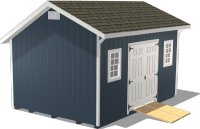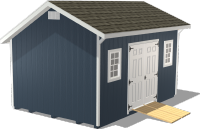How to Get Shed Pests Under Control
by Dakota Storage Buildings, on February 18, 2016
Get Shed Pests Under Control
Do pesky spiders, ants, pine beetles, wasps, and rodents like hanging around your shed? Perhaps they’ve made your shed their own personal home. Not only can this be a nuisance to you, but it can also contribute to the deterioration of your shed and the items stored inside. If you want to fight off these pests, below are some ideas. It’s time to show them who’s boss!
Remove sources of food, water, and shelter.
- Eliminate water sources. Check for roof and siding leaks. Also makes sure there isn’t any leaking plumbing. If water accumulates from these sources, it can become a breeding ground for insects or a hydration supply for rodents.
- Eliminate options for shelter. Piles of wood, newspapers, cardboard, and other clutter are ideal places for pests such as mice to breed and hide. If these piles get wet, they can also serve as an ideal habitat for countless insect species.
- Eliminate access to food. Do not to store food of any kind in your shed and keep trash cans far away if possible. If you have a spider infestation, try to get rid of the other insects first (their food source) and your spider problem may resolve itself.
- Eliminate entrances. Close off places where pests can enter. Take a moment to inspect your shed. When you find a visible opening, take time to seal it. You may need to caulk cracks and crevices around window and doors.
Use a pesticide.
- Choose the right product. Be sure to read the label entirely so that you are selecting the right product to solve your problem and always follow the instructions and safety warnings. For safety purposes, buy ready-to-use products, not those that require mixing.
TIP: In addition to spraying around the doorframes and windows, also apply to the areas where you’ve spotted insect activity. It may also help to remove vegetation from within 12–24 inches of your shed.
- Choose to handle pesticide containers properly. After use, remember to store or dispose of the pesticide and its container properly. If you don’t know the proper way, read the instructions on the bottle. Improper storage or disposal may lead to health or safety issues.
TIP: In addition to reading and following the label directions, consider these important tips when using pesticides.
- Choose a pest-control company wisely. If DIY is not your thing, hiring a pest-control company is another option. Research companies and choose the one that’s best for you. Regardless of the company you choose, ask them to find and correct the source of the problem before applying pesticides.
Just a few more things.
After sources of food, water, and shelter have been eliminated and pesticides have been applied, don’t assume the problem is over. Be sure to conduct regular maintenance checks and spray for insects routinely.
If you prefer humane options for removing and preventing rodent issues, you may want to consider live trapping or Integrated Pest Management.
If you don’t have a shed but are thinking about buying one, consider our ranch-style, highbarn-style, and lowbarn-style sheds that come with high-quality roofing, siding, flooring, insulation and more -- all working together to create a sturdy, dependable, and pest-repellent outdoor storage building.


























